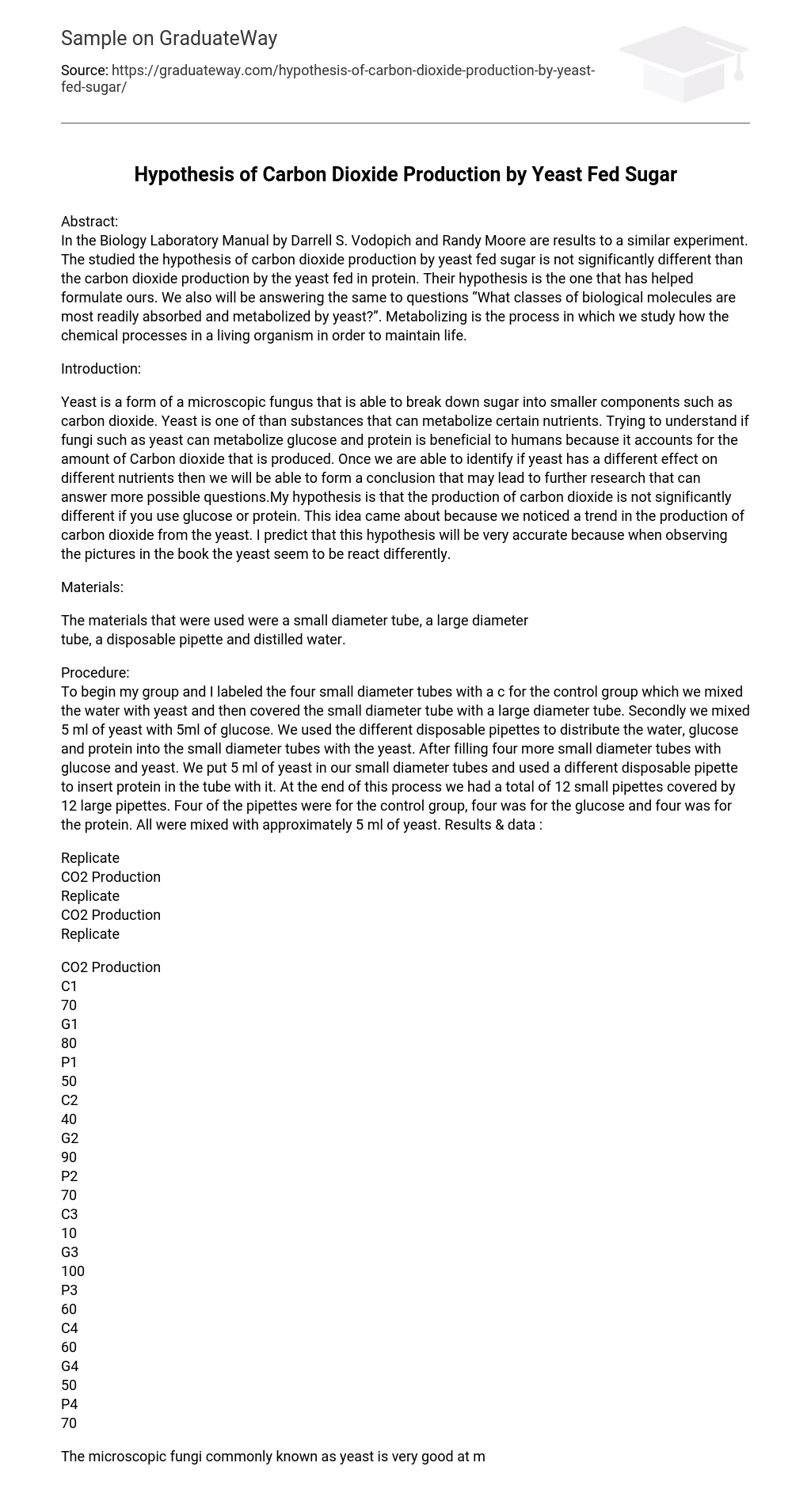Abstract:
In the Biology Laboratory Manual by Darrell S. Vodopich and Randy Moore are results to a similar experiment. The studied the hypothesis of carbon dioxide production by yeast fed sugar is not significantly different than the carbon dioxide production by the yeast fed in protein. Their hypothesis is the one that has helped formulate ours. We also will be answering the same to questions “What classes of biological molecules are most readily absorbed and metabolized by yeast?”. Metabolizing is the process in which we study how the chemical processes in a living organism in order to maintain life.
Introduction:
Yeast is a form of a microscopic fungus that is able to break down sugar into smaller components such as carbon dioxide. Yeast is one of than substances that can metabolize certain nutrients. Trying to understand if fungi such as yeast can metabolize glucose and protein is beneficial to humans because it accounts for the amount of Carbon dioxide that is produced. Once we are able to identify if yeast has a different effect on different nutrients then we will be able to form a conclusion that may lead to further research that can answer more possible questions.My hypothesis is that the production of carbon dioxide is not significantly different if you use glucose or protein. This idea came about because we noticed a trend in the production of carbon dioxide from the yeast. I predict that this hypothesis will be very accurate because when observing the pictures in the book the yeast seem to be react differently.
Materials:
The materials that were used were a small diameter tube, a large diameter
tube, a disposable pipette and distilled water.
Procedure:
To begin my group and I labeled the four small diameter tubes with a c for the control group which we mixed the water with yeast and then covered the small diameter tube with a large diameter tube. Secondly we mixed 5 ml of yeast with 5ml of glucose. We used the different disposable pipettes to distribute the water, glucose and protein into the small diameter tubes with the yeast. After filling four more small diameter tubes with glucose and yeast. We put 5 ml of yeast in our small diameter tubes and used a different disposable pipette to insert protein in the tube with it. At the end of this process we had a total of 12 small pipettes covered by 12 large pipettes. Four of the pipettes were for the control group, four was for the glucose and four was for the protein. All were mixed with approximately 5 ml of yeast. Results & data :
Replicate
CO2 Production
Replicate
CO2 Production
Replicate
CO2 Production
C1
70
G1
80
P1
50
C2
40
G2
90
P2
70
C3
10
G3
100
P3
60
C4
60
G4
50
P4
70
The microscopic fungi commonly known as yeast is very good at metabolizing the nutrients known as glucose and proteins. While analyzing the data I noticed that The highest amount of carbon dioxide production was caused because of the metabolizing of the glucose. Even though the production of CO2 is very high in the glucose the numbers are close to the ones or the protein.
Conclusion:
It is my conclusion that yeast is better at metabolizing the glucose than the protein. This conclusion proves my hypothesis as being incorrect because there is a clear difference in the production of CO2 in glucose rather than in protein. These results make since because due to the definition of yeast, it is supposed to produce more carbon dioxide from sugar and glucose is a type of sugar so it was easy for the yeast to metabolize the glucose.





